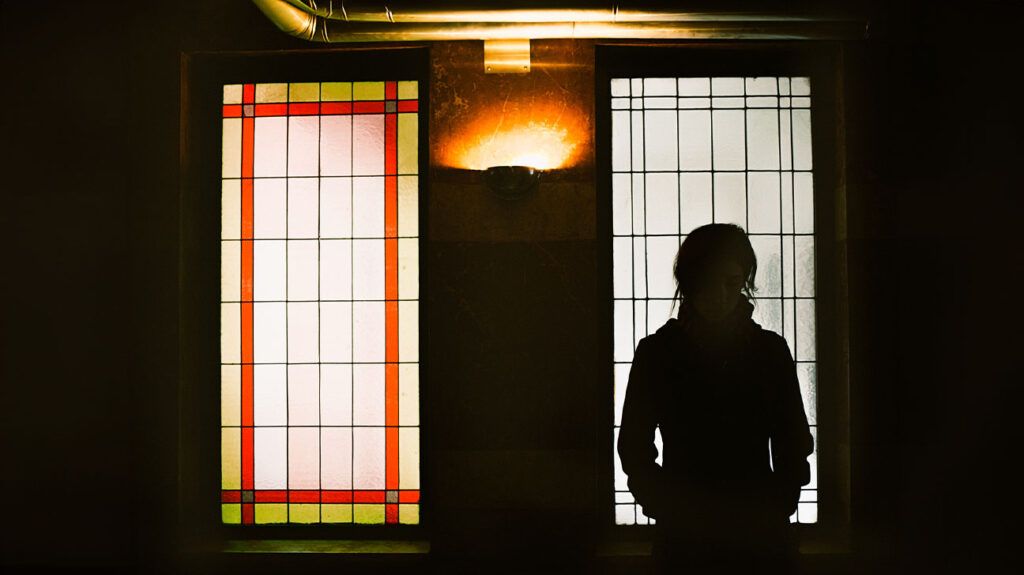Social anxiety and agoraphobia share several characteristics. However, they are two distinct conditions with various key differences.
Social anxiety and agoraphobia are two different conditions that both involve fear or anxiety that can impact a person’s social life.
Both conditions may cause a person to avoid situations that trigger their fear.
Keep reading to learn more about each condition, their similarities and differences, treatment options, and more.

Social anxiety disorder is a common type of anxiety disorder, affecting an
It is natural for people to feel anxious before certain situations, such as first dates, giving a presentation, or meeting new people. People living with social anxiety experience an intense fear that affects their social, work, or school life for at least
The fear is generally overpowering and can make a person feel helpless, particularly when facing a triggering situation. Triggers can differ from person to person and may include:
- being asked to speak in class
- giving a presentation at work
- meeting new people
- eating in front of others
- dating
- giving a performance
- using a public restroom
Symptoms
The majority of people with social anxiety report symptoms appearing before
Strong fear or anxiety surrounding social settings characterizes social anxiety disorder. Common displays of the fear include:
- intense fear of judgment from others
- fear of experiencing anxiety or of seeming anxious in front of others
- panic attacks or feeling panicked
- avoiding eye contact
- feelings of fear or dread in situations involving other people, particularly strangers
- avoiding situations that may trigger anxiety
- feeling awkward, self-conscious, or embarrassed in front of others
- low self-esteem, sensitivity to criticism, and negative self-talk
- having trouble speaking
A person may also experience physical symptoms, such as:
- trembling
- blushing
- mind “going blank”
- sweating
- increased heart rate
- nausea
- rigid body posture or soft voice during social interactions
Agoraphobia describes anxiety that occurs when a person is in a crowded or public place where escape or getting help may not be easily available. It involves a fear that a panic attack will occur when in one of these locations.
The fear causes a person to avoid situations that trigger their fear.
Historically, it was not a distinct psychiatric condition. However, in the current Diagnostic and Statistical Manual of Mental Disorders, Fifth Edition, Text Revision (DSM-5-TR), it is a distinct diagnosis that can occur independently of other diagnoses, such as panic disorder or generalized anxiety disorder.
The condition affects an
Symptoms
For a mental health professional to diagnose a person with agoraphobia, a person must experience extreme fear due to entering into or anticipating at least 2 of 5 different situations for at least
Situations include:
- being outside of the home alone
- using public transportation
- being in open spaces
- standing in lines or crowds
- being in enclosed spaces such as theaters or malls
The fear is accompanied by cognitive or behavioral changes to help the person avoid entering into triggering situations.
These conditions have some distinctive features that set them apart.
Social anxiety disorder
Agoraphobia
Prevalence of co-occurrence
Estimates of the number of people having both agoraphobia and social anxiety disorder vary greatly. The range is between
Treatments for social anxiety and agoraphobia are similar. Both can involve therapy, medications, or a combination of both.
The treatment often helps manage both conditions.
Social anxiety disorder
Treatment
Once they receive a diagnosis, a person will often benefit from a combination of psychotherapy and medication.
Cognitive behavioral therapy (CBT) is a common therapeutic approach to help manage social anxiety, often involving a specific type known as exposure therapy. This involves introducing a person to triggers slowly and in a controlled manner to help them reframe how they view the situation.
Medications may include one or more of the following options:
- beta-blockers
- antidepressants
- benzodiazepines or other anti-anxiety medications
Agoraphobia
Treatment involves psychotherapy and medications. Mental health professionals
In mild cases, a person may benefit from or be able to choose between either option.
In more severe cases, mental health professionals may recommend a combination of both treatment methods.
Mental health professionals generally consider antidepressants, such as SSRIs, as the first-line therapy for agoraphobia due to the effectiveness of the medications and the reduced risk of side effects or abuse. Other medications they may prescribe to help manage specific symptoms include:
- SNRIs
- tricyclic antidepressants (TCAs)
- benzodiazepines
The following sections provide answers to frequently asked questions about agoraphobia and social anxiety disorder.
What are the two types of agoraphobia?
Doctors divide agoraphobia into two types: with panic attacks and without panic attacks. Treatment is generally similar.
What does severe social anxiety feel like?
Severe social anxiety may feel different for each person. It
The fear is strong enough to alter how a person behaves as they attempt to avoid situations that can trigger their fear.
Social anxiety and agoraphobia are similar mental health conditions. They may occur together for some people.
They both involve an intense, behavior-modifying fear and have similar treatments. However, agoraphobia involves a fear of not being able to escape situations, such as being on public transportation or in open areas. Social anxiety disorder involves a person’s fear of others judging them either in public or private settings.
Individuals who are experiencing severe anxiety in certain situations should speak with a mental health professional.
